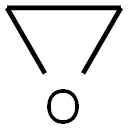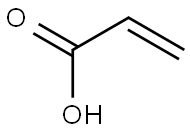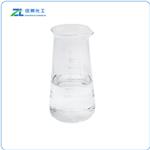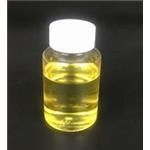Description
2-Hydroxyethyl acrylate (HEA) forms homopolymers and copolymers. HEA is used mainly either as a co-monomer in the manufacture of polymers or as a chemical reactant in the manufacture of chemical intermediates. In the manufacture of polymers, HEA can be co-polymerized with acrylic acid, acrylates, methacrylates, vinyl acetate, vinyl chloride, vinylidene chloride, styrene, butadiene, and the like. Co-reactants with HEA include aromatic and aliphatic isocyanates, anhydrides, and epoxides. The polymers and chemical intermediates made with HEA find applications in automotive top coatings, architectural coatings, photocure resins, and adhesives. Globally about half of the HEA produced is used in the production of acrylic enamels for the automotive industry, where a clear topcoat is applied to a pigmented base coat to increase corrosion protection and durability.
Chemical Properties
Hydroxyethyl acrylate is a clear colorless liquid. miscible with water, soluble in general organic solvents. The commodity generally contains 400ppm of hydroquinone methylether, a polymerization inhibitor. Hydroxyethyl acrylate is a difunctional acrylate monomer with the characteristic high reactivity. Hydroxyethyl acrylate is used in a crylics for coatings, adhesives and UV reacitve oligomers. It can be used for crosslinking with isocyantes or melamines.
Uses
2-Hydroxyethyl acrylate is an acrylic monomer for use in UV inks, adhesives, lacquers, artificial nails, etc.
Uses
As a reactive monomer 2-Hydroxyethyl acrylate is used as a crosslinking agent for resins, plastics and rubber modifiers. Further, it is used in the synthesis of amphilic block copolymers by nitroxide mediated living radical polymerization. In addition to this, it is used to prepare tuned poly(hydroxyethyl acrylate) by atom transfer radical polymerization.
Definition
ChEBI: 2-Hydroxyethyl acrylate is a functional monomer for the manufacture of thermosetting acrylic resins.
Application
2-Hydroxyethyl acrylate (HEA) is a monomer that is widely used in the field of material synthesis for the production of various types of polymers, such as hydrogels, coatings, adhesives, and thermosets. Its versatility lies in its ability to copolymerize with a variety of monomers, resulting in a wide range of polymer properties and applications. Its main use is in the production of hydrogels, which are highly absorbent and can be used in wound dressings, contact lenses, drug delivery systems, and other biomedical applications. Additionally, 2-hydroxyethyl acrylate-based coatings and adhesives are used in various surface modification and bonding applications, owing to their excellent adhesion, flexibility, and chemical resistance properties.
General Description
A clear colorless liquid. Less dense than water. Vapors heavier than air. Corrosive to tissue. Flash point 120°F. May polymerize exothermically if heated or contaminated. If the polymerization takes place inside a container, the container may rupture violently. Used to make plastics.
Air & Water Reactions
Flammable. Slightly soluble in water.
Reactivity Profile
A functional monomer of thermosetting acrylic resins.
Health Hazard
Inhalation causes irritation of nose and throat. Contact with liquid irritates eyes and skin.
Fire Hazard
Behavior in Fire: Containers may explode
Flammability and Explosibility
Non flammable
Potential Exposure
2-Hydroxyethyl acrylate is contained in Lowicryl 4KM and K11M resins. It caused contact dermatitis in workers embedding media for electron microscopy. It may also be contained in ultraviolet-curable nail gel used for photobonded sculptured nails.
Toxics Screening Level
The Initial Threshold Screening Level (ITSL) 2-hydroxyethyl acrylate is 1 μg/m3 with annual averaging time.








